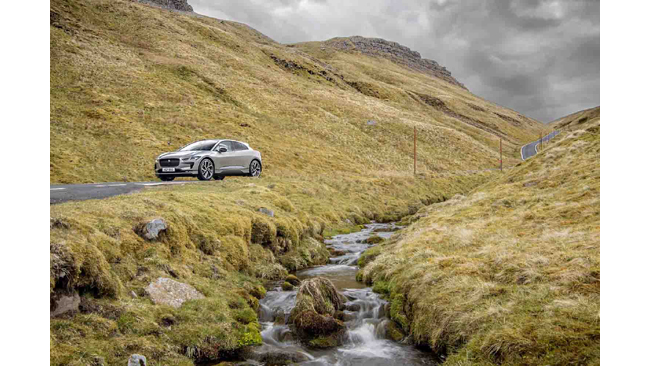
Whitley, 02June, 2021.
The Jaguar I-PACE shrugged off the steep inclines, twisting tarmac and near freezing temperatures of the UK’s highest paved road to successfully ‘Everest’ at Great Dun Fell, in Cumbria, on a single charge of its 90kWh battery.
The award-winning all-electric
performance SUV model was driven by Olympic and World champion cyclist, Elinor
Barker MBE.
The concept of Everesting is
simple, yet extreme: complete a series of runs up an incline until achieving an
elevation gain of 8 848 m – equal to an ascent of Mount Everest – and the
popularity of this endurance challenge boomed among cyclists during the
pandemic*.
Known by cyclists as
‘Britain’s Mont Ventoux’ – a reference to the daunting Alpine mountain stage in
the Tour de France – Great Dun Fell is home to the highest surfaced road in the
UK. The narrow ribbon of asphalt is defined by a series of sweeping bends and
gradients of up to 20 per cent as it climbs 547 m from the start point used for
the challenge to a peak of 848 m. Elinor completed 16.2 repeats of the 5.8 km
climb (11.6 km loop in total) using the I-PACE’s regenerative braking
technology to generate approximately 60 per cent of additional available energy
over the total 16 descents.
Having covered 199.6 km in
total, including a 12.9 km drive to the start point on the fell, the I-PACE
completed its energy intensive challenge with 31 per cent battery charge
remaining – enough to drive for up to 128.7 km more.
Key to the efficient
completion of the Everesting challenge was the I-PACE’s regenerative braking
system. Developed using technology from Jaguar Racing’s Formula E programme,
‘regen’ is a critical enabler for success on the track. In an average race the
I-TYPE 5 generates around 30 per cent of additional energy from regen, without
it the car simply wouldn’t make it to the chequered flag.
Elinor Barker, MBE, said: “I watched with fascination as cyclists took up the Everesting
challenge during lock down – even as a professional rider, it’s a daunting feat
of endurance, so I was happy to do it behind the wheel of the all-electric
Jaguar I-PACE. When I found out that Jaguar Racing drivers typically need to
regenerate 30 per cent of their I-TYPE's battery capacity in a Formula E race,
as a competitor I naturally wanted to beat that figure! I’m delighted to have
smashed that target – all while enjoying the comfort, silent power delivery and
single-pedal driving of the I-PACE.”
Elinor
was supported throughout the drive by members of
the Jaguar Racing and I-PACE engineering teams, on hand to monitor the
vehicle’s performance.
Jack Lambert, Jaguar Racing
Engineer, said: “The advanced regenerative braking system
developed for the I-PACE is a defining feature of the driving experience.
Lessons learned through our Formula E programme on the track ensure I-PACE
customers enjoy benefits on the road in terms of optimised range. The
regenerative braking also provides up to 0.4g of deceleration so Elinor would
only have been using the conventional friction brakes at two or three points on
each run.”
In preparation for the
challenge, the I-PACE was preconditioned using the Jaguar Remote App. While the vehicle is plugged in, preconditioning
automatically heats or cools the battery to reach its ideal operating
temperature and establishes the desired cabin temperature –using mains power.
Using the grid to do this instead of drawing current from the vehicle battery
optimises the driving range – especially in cold weather.
Another
feature which enhances the I-PACE’s efficiency is Smart Climate, which uses the
seatbelt sensors to determine how many occupants are travelling inside, and
only heating or cooling the relevant areas of the cabin, maintaining comfort
while minimising energy use.